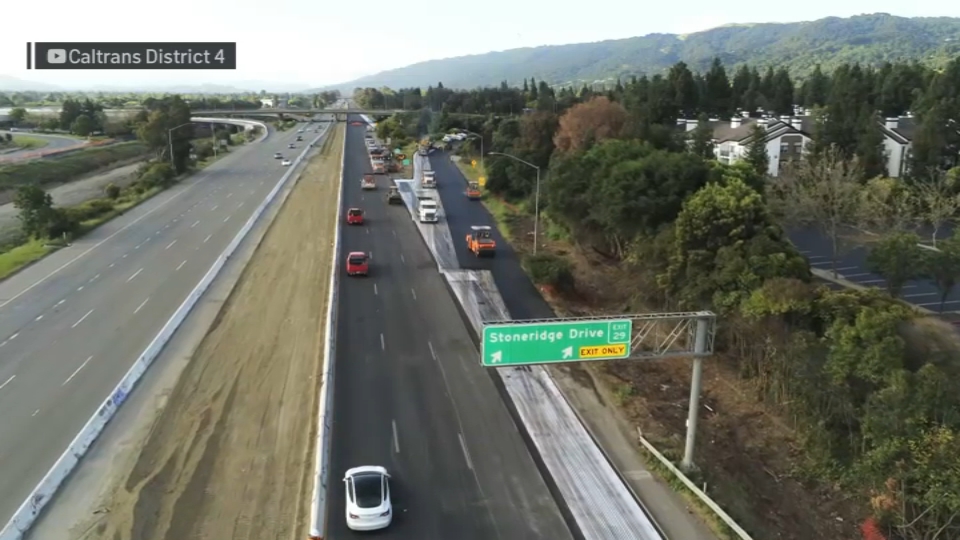Tens of thousands of Bay Area residents financially impacted during the COVID-19 crisis now face tens of millions of dollars in unpaid water bills, prompting both long-term financial and public health concerns.
That’s the conclusion of a new a report released Thursday by the non-profit public policy organization SPUR, and that looming potential crisis has experts concerned about vulnerable customers.
While California Gov. Gavin Newsom issued an order in April of last year preventing utilities from cutting off access to water during the pandemic for customers behind on payments, the bills continue to accrue and, experts say, all that debt will still be on the books when the moratorium eventually expires.
“If we don’t think about this carefully, lifting the ban suddenly would be a disaster,” said SPUR Director of Sustainability and Resiliency Policy Laura Feinstein, who authored the report.
“I think everybody’s worst fear is that large numbers of low-income folks that have trouble paying their bills are going to get their water disconnected, because that means that there’s large numbers of people in the community who can’t wash their hands,” Feinstein said. “It also means they can get evicted from their apartments.”
In the long-run, mounting debt could also leave water utilities in dire financial straights without federal assistance, according to the report.
According to SPUR’s report, as well as data provided by the San Francisco Public Utilities Commission (SFPUC) and East Bay Municipal Utility District (EBMUD), water bill debt is soaring across the state.
Local
“We’ve seen a pretty significant uptick in delinquent accounts,” said SFPUC Press Secretary Will Reisman. “This is something we've been tracking really since the start of the pandemic in March.”
In San Francisco alone, delinquent residential and commercial water customers owe about $8 million combined in unpaid water bills, according to October data. That’s water debt seven times greater than the amount the agency reported in the period just before the onset of the COVID-19 pandemic.
About 6,400 residential and commercial customers are currently at least 90 days behind on payments, according to the SFPUC.
“For the time being, we can weather these [debt] increases,” Reisman said, pointing out the delinquent amount accounts for less than 2% of SPUC total revenue.
“It’s really about finding ways to help our customers when it comes to paying their bills,” Reisman said, saying the SFPUC has expanded customer assistance programs during the pandemic.
SFPUC customers can click here to learn about the agency's assistance programs.
Across the Bay, delinquent water customers owe $7.4 million, according to December data from East Bay MUD. That total is about three times higher than the typical amount of customer water debt, according to East Bay MUD.
“We know it’s a difficult time for many right now,” East Bay MUD spokesperson Andrea Pook said in a statement. “We encourage our customers to go to www.ebmud/com/cap for information on our customer assistance program, or they can call us and speak directly with a representative.”
Feinstein said it’s critical for utilities to enroll more eligible customers into those assistance programs, which she said have low participation rates.
According to SPUR’s report, just 4.5% of eligible SFPUC customers were enrolled in an assistance program.
The SFPUC said it's already undertaken efforts to boost enrollment in customer assistance programs by buying ads in local newspapers, placing program flyers in every SFPUC bill, and distributing door hangers will bill relief info in the city's most at risk communities.
East Bay MUD said it’s enrolled more than 1,000 customers in assistance programs since last March and estimates about 25% of eligible customers are currently signed up.
“There needs to be an effort to get 90% or so of low-income customers involved in these programs,” Feinstein said.
Feinstein also said across the board, utilities should offer or expand on debt management programs, and called on the federal government to offer even more in additional funds to help pay down water bill debt.
“$638 million in the last [Federal]stimulus for water bills, that’s probably going to take care of maybe one percent or two percent of the problem in the country,” Feinstein said. “So there needs to be a big infusion of funding to deal with this.”
It’s tough to pin down the exact amount of current national water debt. Feinstein hopes that a state report due out later this month will help clarify the numbers for California.
An August investigation from the non-profit journalism organization Circle of Blue found more than 1.5 million households in 12 major cities cumulatively owe $1.1 billion in past-due water bills.
“We’ve been advocating with other utilities across the country on federal assistance, particularly for these low-income assistance programs, these subsidies that we would like to see become permanent for customers who have trouble paying their bills on a monthly basis,” SFPUC’s Reisman said.
Beyond the economic burden of water debt, Feinstein worries about the public health implications of potentially looming water shutoffs.
“That would be a public health disaster during the pandemic,” Feinstein said. “To their credit, I think water utilities and legislators are all trying to find a solution to this problem, but it’s not an easy fix.”



